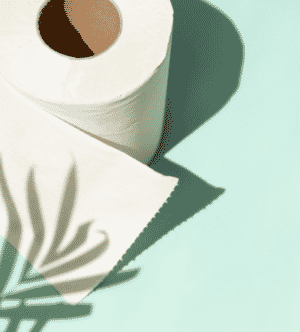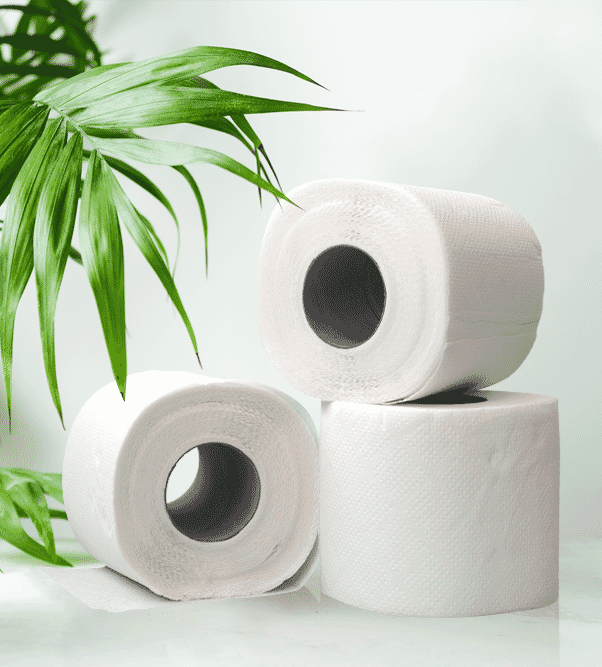You are using an outdated browser. Please upgrade your browser to improve your experience
It is difficult to imagine nowadays, but there was once a time when toilet paper wasn’t around; it hadn’t been invented. In other countries around the world where other forms of personal hygiene are more common (such as the bidet for example) then this might not seem such a terrible thought, but here in the UK where all we have known is toilet paper, then the thought of what went before is not a thought you want to linger on for too long!
In ancient Rome people often used a tersorium instead of paper to wipe. These ancient cleaning aids consisted of a stick with a vinegar or salt water-soaked sponge attached to the end (they looked not dissimilar to a modern-day toilet brush, and they are mentioned frequently throughout Roman literature).
Archaeologists have also uncovered samples of pessoi, said to be an ancient Greek and Roman toilet paper equivalent (or substitute depending on your viewpoint!) which consisted of a small oval pebble or sometimes pieces of broken ceramic. Pessoi have been found in the ruins of ancient Roman and Greek latrines and the parasitic remains on them can only come from a human and therefore must have been used in a latrine context.
China was ahead of the times when it came to toilet paper and the earliest reference to toilet paper have been discovered in materials written by Yen Chih-Thui, a sixth-century A.D. scholar who had access to discarded manuscripts which were used as a form of toilet paper. Researchers also suggest that hemp paper like that found in the tomb of second-century A.D. emperor too rough for writing, was used in the bathroom instead as an early toilet paper.
By the year 1393, rice-based toilet paper was mass-produced for the Chinese imperial family. As a comparison, it took over 450 years (1857) for the Western world to get its first mass-produced toilet paper. You might be surprised to know that bamboo paper has been made since the 3rd century and it is now over 1700 years since it was first used and now makes bamboo toilet rolls and bamboo kitchen rolls around the world.
So, no matter how much we might complain about toilet paper shortages during stockpiling in pandemics, or the inconvenience of buying and carrying it home, it is far better than the pre-paper solutions of sticks or pebbles!
"*" indicates required fields
| Cookie | Duration | Description |
|---|---|---|
| __kla_viewed | never | Klaviyo sets this cookie to collect information on the user's website navigation and preferences. |
| __stripe_mid | 1 year | Stripe sets this cookie to process payments. |
| __stripe_sid | 1 hour | Stripe sets this cookie to process payments. |
| cookielawinfo-checbox-analytics | 11 months | This cookie is set by GDPR Cookie Consent plugin. The cookie is used to store the user consent for the cookies in the category "Analytics". |
| cookielawinfo-checbox-functional | 11 months | The cookie is set by GDPR cookie consent to record the user consent for the cookies in the category "Functional". |
| cookielawinfo-checbox-others | 11 months | This cookie is set by GDPR Cookie Consent plugin. The cookie is used to store the user consent for the cookies in the category "Other. |
| cookielawinfo-checkbox-advertisement | 1 year | Set by the GDPR Cookie Consent plugin, this cookie records the user consent for the cookies in the "Advertisement" category. |
| cookielawinfo-checkbox-necessary | 11 months | This cookie is set by GDPR Cookie Consent plugin. The cookies is used to store the user consent for the cookies in the category "Necessary". |
| cookielawinfo-checkbox-performance | 11 months | This cookie is set by GDPR Cookie Consent plugin. The cookie is used to store the user consent for the cookies in the category "Performance". |
| CookieLawInfoConsent | 1 year | CookieYes sets this cookie to record the default button state of the corresponding category and the status of CCPA. It works only in coordination with the primary cookie. |
| viewed_cookie_policy | 11 months | The cookie is set by the GDPR Cookie Consent plugin and is used to store whether or not user has consented to the use of cookies. It does not store any personal data. |
| wp_woocommerce_session_* | 2 days | WooCommerce sets this cookie to make a unique code for each customer so that it knows where to find the cart data in the database for each one. |
| Cookie | Duration | Description |
|---|---|---|
| __kla_id | 1 year 1 month 4 days | Klaviyo sets this cookie to collect information on the visitor’s behavior. This information is used for internal analytics and to optimise the website. It also registers if the visitor has subscribed to a news letter. |
| _fbp | 7 days | Facebook sets this cookie to display advertisements when either on Facebook or on a digital platform powered by Facebook advertising after visiting the website. |
| _ga | 1 year 1 month 4 days | Google Analytics sets this cookie to calculate visitor, session and campaign data and track site usage for the site's analytics report. The cookie stores information anonymously and assigns a randomly generated number to recognise unique visitors. |
| _ga_* | 1 year 1 month 4 days | Google Analytics sets this cookie to store and count page views. |
| _gcl_au | 3 months | Google Tag Manager sets the cookie to experiment advertisement efficiency of websites using their services. |
| last_pys_landing_page | 7 days | PixelYourSite plugin sets this cookie to manages the analytical services. |
| last_pysTrafficSource | 7 days | PixelYourSite plugin sets this cookie to manage the analytical services. |
| pys_first_visit | 7 days | PixelYourSite plugin sets this cookie to manage the analytical services. |
| pys_landing_page | 7 days | PixelYourSite plugin sets this cookie to manages the analytical services. |
| pys_session_limit | 1 hour | PixelYourSite plugin sets this cookie to manage the analytical services. |
| pys_start_session | session | PixelYourSite plugin sets this cookie to manage the analytical services. |
| pysTrafficSource | 7 days | PixelYourSite plugin sets this cookie to manage the analytical services. |
| Cookie | Duration | Description |
|---|---|---|
| fr | 3 months | Facebook sets this cookie to show relevant advertisements by tracking user behaviour across the web, on sites with Facebook pixel or Facebook social plugin. |
| NID | 6 months | Google sets the cookie for advertising purposes; to limit the number of times the user sees an ad, to unwanted mute ads, and to measure the effectiveness of ads. |
| Cookie | Duration | Description |
|---|---|---|
| m | 1 year 1 month 4 days | No description available. |
| pbid | 6 months | Description is currently not available. |


